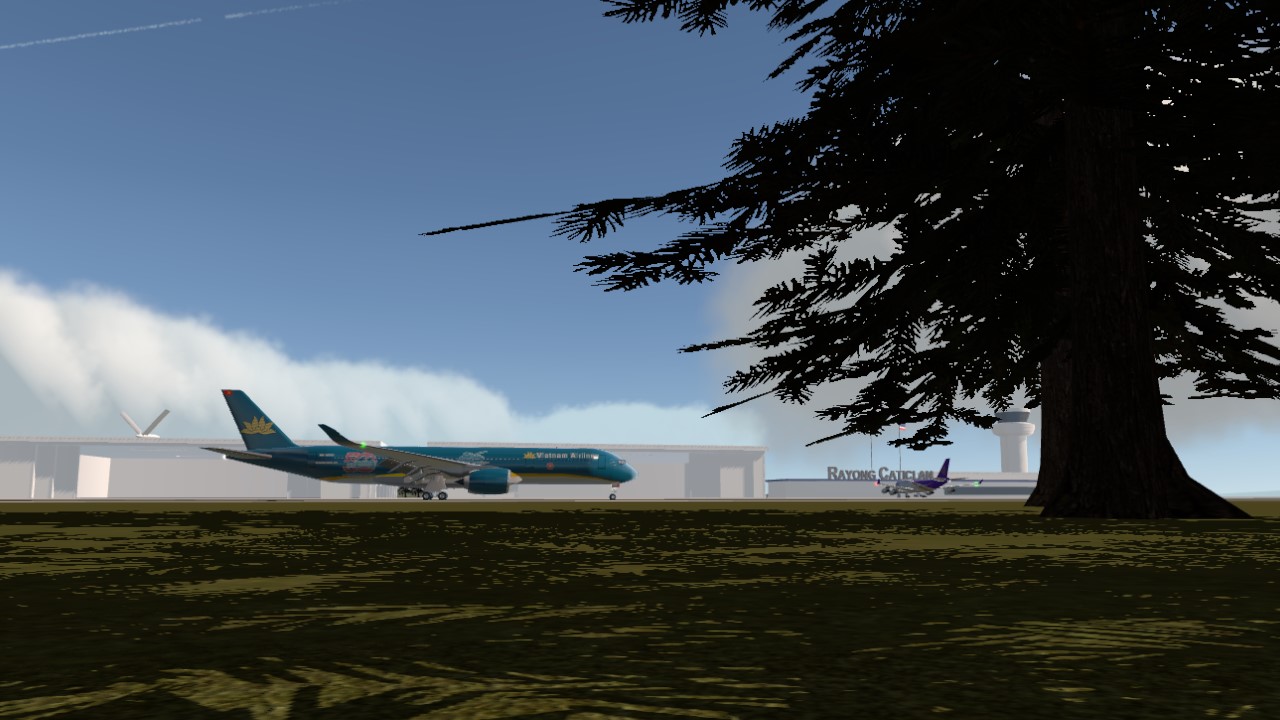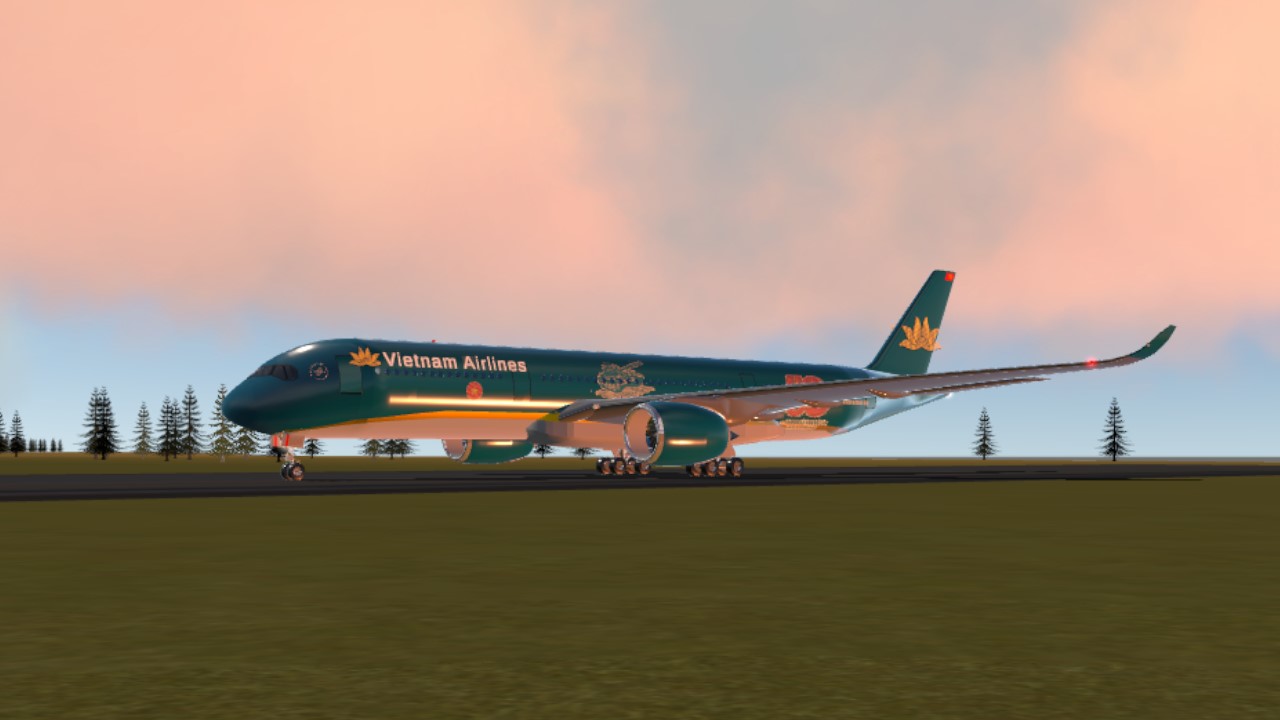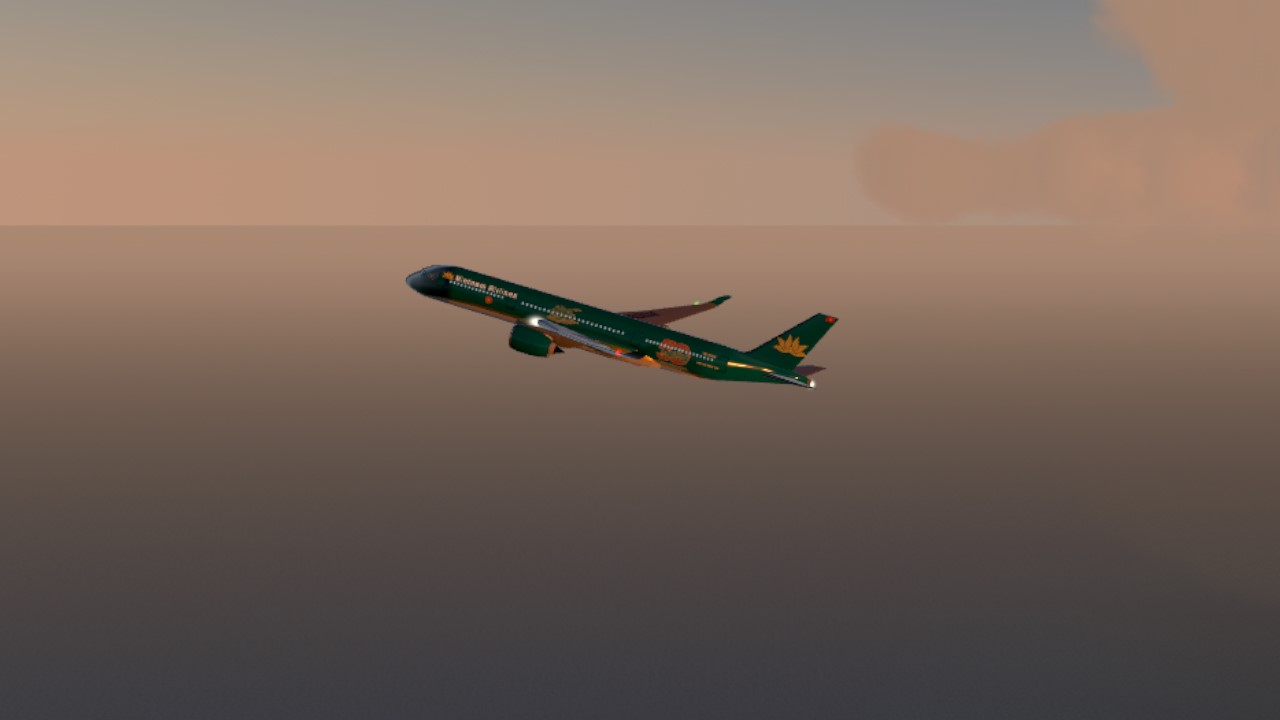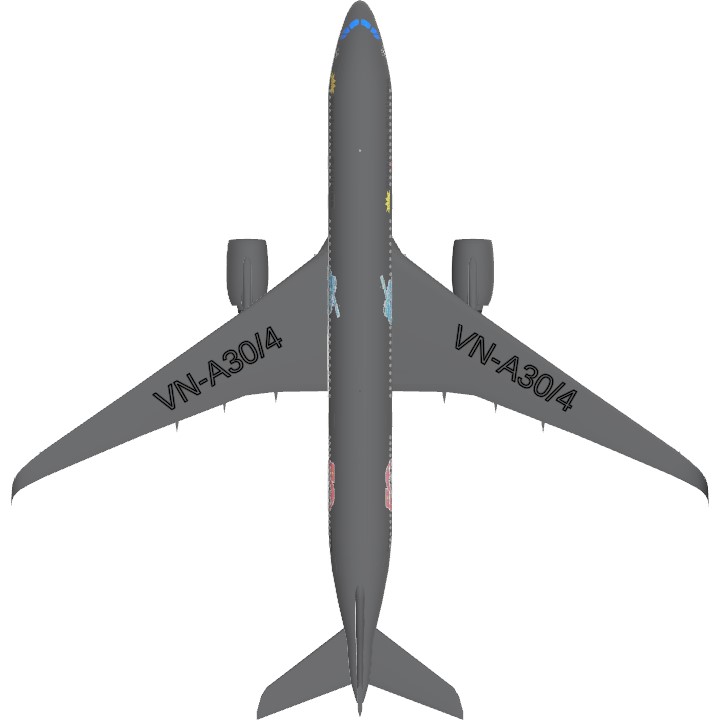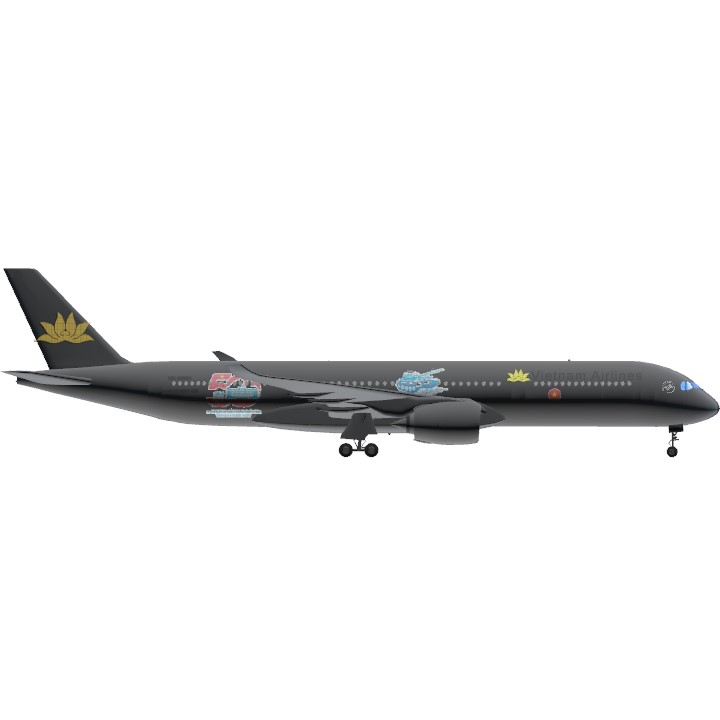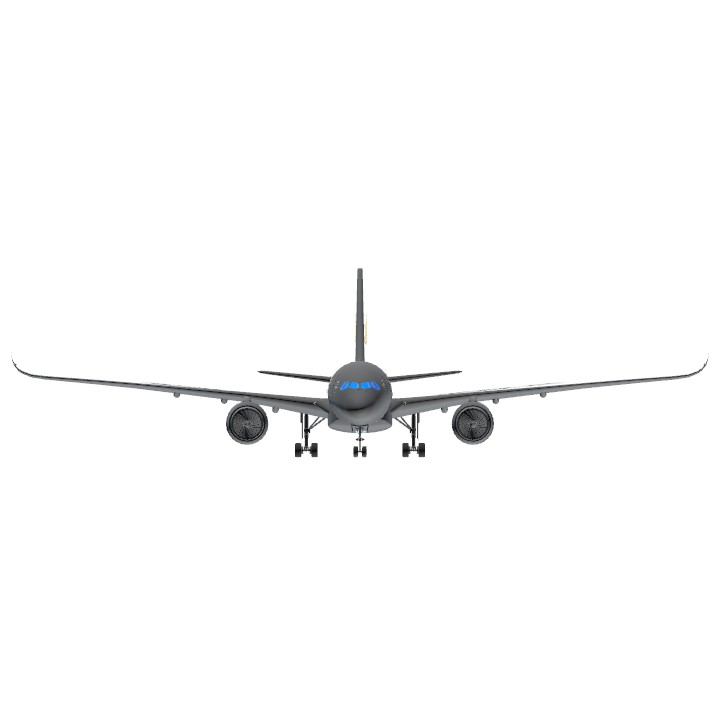A350-900 Vietnam Airlines (Special 30/4/1975,4000 Points And 75 Followers)
A350:
The Airbus A350 is a long-range, wide-body twin-engine airliner developed and produced by Airbus. The initial A350 design proposed in 2004, in response to the Boeing 787 Dreamliner, would have been a development of the Airbus A330 with composite wings and new engines. Due to inadequate market support, Airbus switched in 2006 to a clean-sheet "XWB" (eXtra Wide Body) design, powered by two Rolls-Royce Trent XWB high bypass turbofan engines. The prototype first flew on 14 June 2013 from Toulouse, France. Type certification from the European Aviation Safety Agency (EASA) was obtained in September 2014, followed by certification from the Federal Aviation Administration (FAA) two months later.
Vietnam Airlines:
Vietnam Airlines is the flag carrier of Vietnam.[9] The airline was founded in 1956 and later established as a state-owned enterprise in April 1989. Vietnam Airlines is headquartered in Long Biên district, Hanoi, with hubs at Noi Bai International Airport in Hanoi and Tan Son Nhat International Airport in Ho Chi Minh City. The airline flies 117 routes across 19 countries, excluding codeshared services.[6]
From its inception until the early 1990s, Vietnam Airlines was a minor carrier within the aviation industry as it was hampered by a variety of factors including the socio-economic and political situation of the country. With the government's normalization of relations with the United States, the airline could expand, improve its products and services, and modernize its ageing fleet. In 1996, the Vietnamese government brought together 20 service companies to form Vietnam Airlines Corporation, with the airline itself as the centrepiece. In 2010, the corporation was restructured into a limited liability company and renamed Vietnam Airlines Company Limited. A seven-seat management board, appointed by the Vietnamese Prime Minister, oversees the company.[10]
As passenger transport constitutes its core activity, Vietnam Airlines plays a crucial role in the economic development of the country. It owns 100% of Vietnam Air Service Company – a regional airline in southern Vietnam and almost 99% of the low-cost carrier Pacific Airlines.[11] In addition, the corporation earns revenue from airline catering and the maintenance and overhauling of aircraft through a number of its subsidiaries, including Vietnam Airlines Engineering Company and Vietnam Airlines Caterers. The company has also diversified its investments in the aircraft-leasing and airport ground-servicing industries, and is looking to manufacture aircraft components. It controls and operates a cargo division, Vietnam Airlines Cargo.
Vietnam Airlines became a member of SkyTeam in June 2010, making it the first Southeast Asian carrier to have joined that alliance. As of September 2021, the State's stake in Vietnam Airlines is 86.34%, All Nippon Airways holds 5.62%, being a strategic shareholder of the national flag carrier
About 30/4:
The fall of Saigon, known in Vietnam as Reunification Day (Vietnamese: Ngày gi?i phóng mi?n Nam, th?ng nh?t d?t nu?c)[9] was the capture of Saigon, the capital of South Vietnam, by North Vietnam on 30 April 1975. As part of the 1975 spring offensive, this decisive event led to the collapse of the South Vietnamese government and the evacuation of thousands of U.S. personnel and South Vietnamese civilians, and marked the end of the Vietnam War. The aftermath ushered in a transition period under North Vietnamese control, culminating in the formal reunification of the country as the Socialist Republic of Vietnam under communist rule on 2 July 1976.[10]
The People's Army of Vietnam (PAVN) and the Viet Cong (VC), under the command of General Van Ti?n Dung, began their final attack on Saigon on 29 April 1975, with the Army of the Republic of Vietnam (ARVN) forces commanded by General Nguy?n Van Toàn suffering a heavy artillery bombardment. By the afternoon of the next day, the PAVN/VC had occupied the important points of the city and raised their flag over the South Vietnamese Presidential Palace.
The capture of the city was preceded by Operation Frequent Wind, the evacuation of almost all American civilian and military personnel in Saigon, along with tens of thousands of South Vietnamese civilians who had been associated with the Republic of Vietnam. A few Americans chose not to be evacuated. United States ground combat units had left South Vietnam more than two years prior to the fall of Saigon and were not available to assist with either the defense of Saigon or the evacuation. The evacuation was the largest helicopter evacuation in history.:?202? In addition to the flight of refugees, the end of the war and the institution of new rules by the communist government contributed to a decline in the city's population until 1979, after which the population increased again.
On 2 July 1976, the National Assembly of the unified Vietnam renamed Saigon in honor of H? Chí Minh, the late Chairman of the Workers' Party of Vietnam and founder of the Democratic Republic of Vietnam (North Vietnam).
Reunification Day (Vietnamese: Ngày Th?ng nh?t), also known as Victory Day (Ngày Chi?n th?ng), Liberation Day (Ngày Gi?i phóng or Ngày Gi?i phóng mi?n Nam), or by its official name, Day of the Liberation of the South and National Reunification (Ngày gi?i phóng mi?n Nam, th?ng nh?t d?t nu?c) is a public holiday in Vietnam that marks the event when the North Vietnamese and North Vietnam-controlled Viet Cong forces captured Saigon (now Ho Chi Minh City), the capital of South Vietnam, on 30 April 1975, thus ending the Vietnam War. The event marked the start of the transition period of reunification, which also occurred after a vote in the National Assembly for reunification on 2 July 1976, when South Vietnam and North Vietnam were merged, forming the modern-day Vietnam.
Thank:
Cockpit By realSavageMan
Plane By FeiGe3
GalacticaAsia
PFD By SARACONIKaviationIndustry
Logo Vietnam Airlines By longanbieu
Moblie
Specifications
Spotlights
- Cellado 8 days ago
General Characteristics
- Predecessor A350-900 Vietnam Airlines
- Created On Windows
- Wingspan 212.4ft (64.7m)
- Length 219.2ft (66.8m)
- Height 59.3ft (18.1m)
- Empty Weight N/A
- Loaded Weight 119,045lbs (53,998kg)
Performance
- Power/Weight Ratio 0.572
- Horse Power/Weight Ratio 0.025
- Wing Loading 21.9lbs/ft2 (107.1kg/m2)
- Wing Area 5,429.0ft2 (504.4m2)
- Drag Points 19227
Parts
- Number of Parts 1357
- Control Surfaces 9
- Performance Cost 5,758

